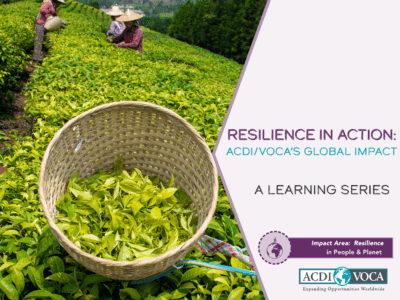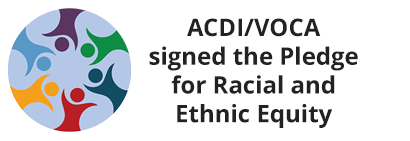
A recent article published by Boston Review explored the pitfalls of digital finance and mobile lending apps in Kenya, a country considered by many as the tech hub of East Africa. The authors of the article, titled “Perpetual Debt in the Silicon Savannah,” argue that this type of microlending is not only providing cash to Kenyans in need, but also taking advantage of a perpetual cycle of debt — to the extent of “enslaving” many borrowers who take out new loans to repay current ones. The authors also point to corporations charging premiums that are so high they would be illegal among Kenyan banks.
Is the practice of mobile lending to blame, or is a lack of regulation at the root of these pitfalls? In this blog, Paul Newall, associate director of partnerships and investment at ACDI/VOCA, shares his take on the inherent risks of unsecured, digital lending and how it can be improved.
Why is improving access to credit an important step toward economic growth?
Paul: Improving access to finance helps underserved communities benefit from financial tools and products, with credit being one of the key products. With better access to suitable credit, a local entrepreneur can make an investment to expand their business, or a local agricultural producer can acquire more efficient machinery. This ability to invest in their businesses, coupled with good business practices, allows entrepreneurs to realize their growth potential and have a positive effect on the market.
Financial technology, or “fintech,” is often seen as a shining success, but this article paints a different picture. What is the reality of fintech in the developing world?
Paul: Fintech holds great promise in providing more access to financial services, often through mobile phones, and helping businesses expand their customer touchpoints, often through agent networks. It’s also promising in terms of these more efficient systems enabling financial institutions to improve their product offerings.
What it doesn’t solve for is the underlying issues that create financial burdens for customers: poor financial literacy, a lack clear communication about product’s terms and conditions, and how their creditworthiness is determined. The latter is a large concern due to the recent push toward microcredit loans, which aim to help underserved populations onto the first rung of the ladder to accessing credit and building a financial history. We all need to better understand what this access means and what the unintended consequences are of making these products available.
One promising aspect of fintech has been the ease by which borrowers can be assessed for credit and granted loans, which often end up being unsecured. What are some of the risks of this practice?
Paul: Credit is traditionally based on the “five Cs”: (1) character, (2) cash flow, (3) capital, (4) conditions, and (5) collateral. When applying for a loan, lending officers often take their time reviewing your ability to repay against these criteria.
With some digital lending apps, there is less focus on meeting these criteria. In some cases, qualifying for credit is not contingent upon meeting all the Cs, which, in itself, isn’t a bad thing. Meeting all the Cs can be too burdensome for some groups and prevent them from accessing much-needed credit. Fintech innovations have attempted to lessen these (often prohibitory) requirements. But some may have lessened them too far. We need to make sure there are policies in place to protect the safety and security of the financial system.
One of the main critiques in the article is that the regulations aren’t there to help borrowers. What should regulators be looking at?
Paul: Quite often regulators are reactionary toward fintech innovations. This isn’t necessarily bad; it is important not to stymy innovation and to allow the market to self-function. However, some products have consequences that require a regulator’s response. If, as the article alludes, Kenya’s credit blacklist is being filled with borrowers who defaulted on microcredit loans, then action is required. We must ensure that the financial system is secure for the institutions and the customers they aim to serve.
Comments






